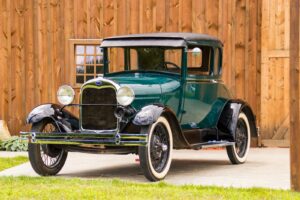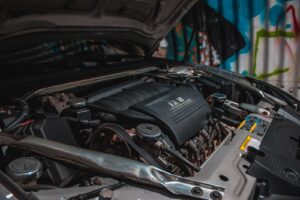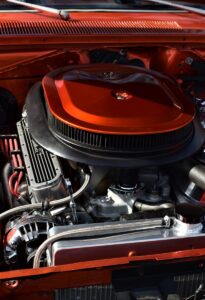 More than a decade ago, 4×4 vehicles were built mainly to crush through off-road environments and then worry about driving on a flat, city road. This was the case of mythical monsters such as Land Rover and Jeep CJ: take no prisoners when running through the mud. As times advanced, automakers figured out the driver incline towards a high driving position on city roads. This is how crossovers were born.
More than a decade ago, 4×4 vehicles were built mainly to crush through off-road environments and then worry about driving on a flat, city road. This was the case of mythical monsters such as Land Rover and Jeep CJ: take no prisoners when running through the mud. As times advanced, automakers figured out the driver incline towards a high driving position on city roads. This is how crossovers were born.
Although looking quite sleek and offering a wide variety of safety and comfort features, modern day SUVs lack the capability of dealing with any off-road scenario that exceeds 5 inch deep mud. Since availability of older terrain vehicles is scarce, buyers orient their attention towards newly made cars which still possess the abilities of their ancestors. Toyota took a risky bet by offering an old school product: 2016 Toyota Land Cruiser is advertised to take on off-roading in the same rough manner as a Jeep CJ.
Was it worth the risk? Let’s find out together.
Construction and Design
The first thing that takes the 2016 Toyota Land Cruiser out of the ordinary is a complete lack of factory options. This 3-row SUV comes with just one fully loaded trim level; nothing to be taken off or added. The whole frame rests over 18-inch wheels, LED headlights and fog lights illuminate the path at night while heated auto-dimming side-mirrors ensure proper rear visibility. After all, you do want to check out the tracks behind you while roaming the hills.
Automatic wipers clean a deep-tinted privacy glass; passengers can witness the moonlight and reach out through a generous sunroof. Checked from the distance, 2016 Land Cruiser looks bulky nevertheless, boasting an air of superiority and toughness.
Performance
A 5.7 liter V8 engine can be found under the hood of the 2016 Toyota Land Cruiser. It delivers an impressive 381 hp and 401 lb-ft of torque. The entire force is delivered to the wheels through an eight-speed automatic gearbox and a permanent 4×4 traction system. While the numbers look amazing, you may just drop a tear finding out EPA estimates fuel economy at only 15mpg combined.
Apart from the engine, the Land Cruiser also comes with a center locking differential and the Kinetic Dynamic Suspension System. The suspension automatically tunes itself to maximize off-road performance and on-road handling. Drivers can also manually select a Terrain Control mode and the car will fine tune settings according to the current surface. Finally, there’s a 5-speed crawl control system, basically a low-speed cruise control for off-road time.
Interior and Safety
Fortunately, 2016 Land Cruiser isn’t just a show-off for off-road experiences; when checking out the inside, one will realize it is actually very user friendly. It boasts a 4-zone climate control with separated second row controls and vents for the third one. Front seats are covered in leather upholstery, heated and ventilated front seats. Power seating is available for the driver (10-way) and front passenger (8-way). Second row seats are split 40/20/40 while third row seating is allocated 50/50.
Toyota made quite some improvements for the 2016 Land Cruiser edition. Although boasting quality materials all over the inside of the cabin, it still lacks the premium feeling found in other luxury competitors. Tilting and height-adjustable steering wheel along with comfortable front seats are allowing the driver to attain the perfect driving position. Little is there to be praised about the seats on the third row. With little head and legroom, most average adults will have a hard time fitting in.
Toyota placed emphasis on safety features; the result uncovers as knee airbags, full-length curtain airbags, side airbags for the first and second row and active head restraints are all integrated in the 2016 Land Rover. Furthermore, it boasts anti-lock braking system, trailer-sway control (to keep control of an 8,000 pounds object being towed), emergency braking and lane-departure systems are also integrated.
Road Behavior
2016’s Toyota Land Cruiser offers a decent ride quality, enhanced by the quality materials chosen for the inside of the cabin. The V8 engine may seem a little soft at first, but once you firmly press the throttle, a nice rumble will erupt from beneath the hood. The newly added 8 speed automatic gearbox did develop some improvements in acceleration times, but it did not help on fuel economy.
Take it off the pavement and the Land Cruiser is king of the hill. Thanks to its high ground clearance and a full fleet of off-road driving aids, even the most inexperienced off-roader can feel like he’s able to tackle any rocks and hills without much trouble. Crawl control is probably doing most of the work, but hey, the feeling is what it matters in the end, right?
Insurance
Insuring a Toyota Land Cruiser can be costly. But the competition is steep and several companies provide affordable insurance on Toyotas in general and Land Cruisers:
All State Toyota Land Cruiser Insurance
Toyota Forsikring
Toyota Insurance Australia
Did Toyota win the bet?
The 2016 Land Cruiser is definitely a beast when it comes to off-road environment. It reveals the old-school take on what off-road vehicles used to be before they were entirely transformed into limping tarmac monsters called crossovers. While it definitely pleases through a decent amount of power and incredible rock climbing, mud swimming capabilities, Toyota still has a lot of work to do when it comes to fuel economy and storage space, both being way below the segment average. Also, since every available option is already included in the standard package, the Land Cruiser doesn’t come cheap, being almost the most expensive car in the segment. It’s $20,000 more expensive than Mercedes’ GL-Class and almost $18,000 more expensive than a Cadillac Escalade.
While city drivers looking for a heightened driving position behind the wheel may be drawn back by the sobbing fuel economy and reduced leg space on the third row, off-road enthusiasts will be willing to double their fuel budget in order to feel the awesome sensation of rock-climbing. No whining about lack of paint choices, limited cargo space or the usage of the almost-outdated electronic fuel injection, just pure wilderness driving without caring about any public road limitations.
 The Ford Model T and Tesla vehicles are both automobiles, but there are several important and significant differences between the two cars.
The Ford Model T and Tesla vehicles are both automobiles, but there are several important and significant differences between the two cars. The Ford Model T was a rear-wheel drive vehicle, while Tesla vehicles are typically all-wheel drive.
The Ford Model T was a rear-wheel drive vehicle, while Tesla vehicles are typically all-wheel drive.









